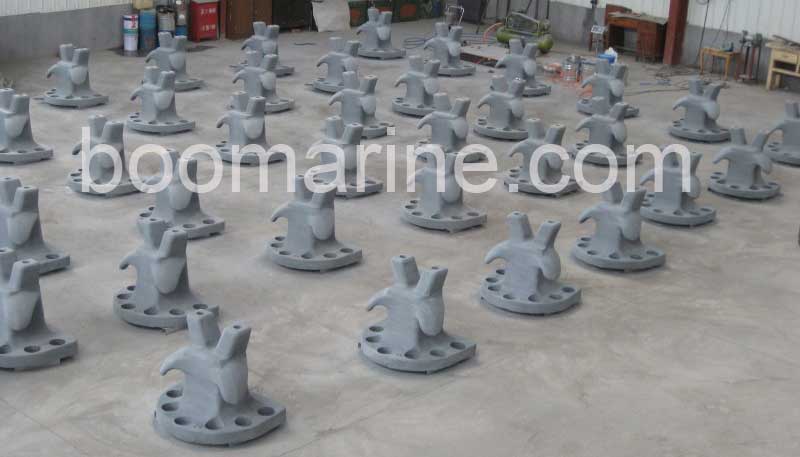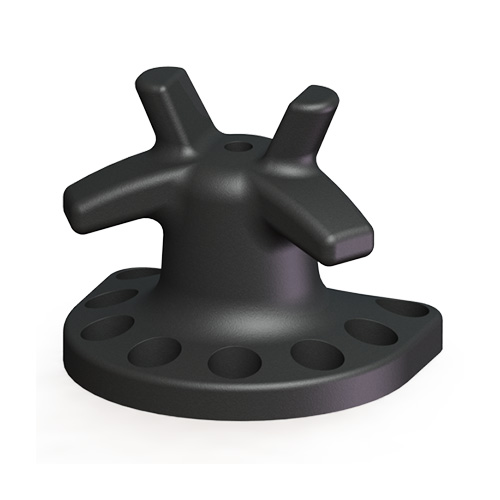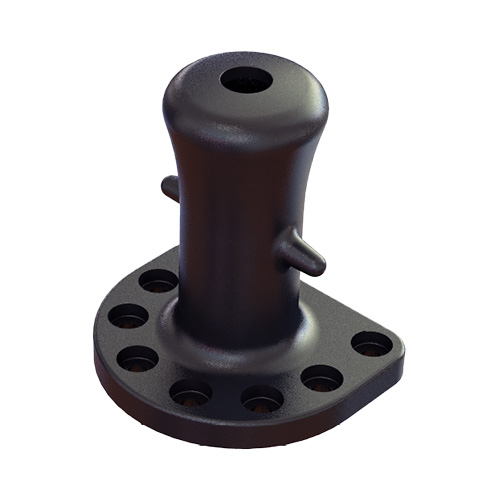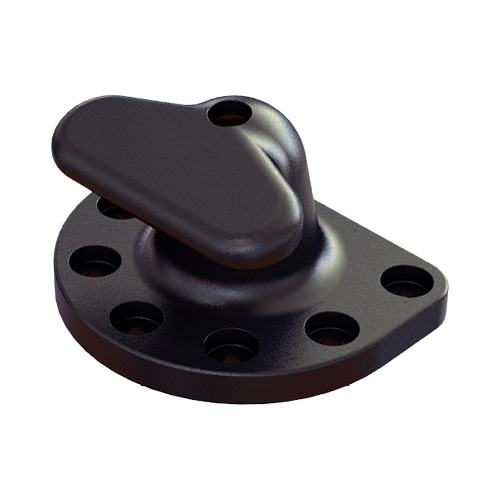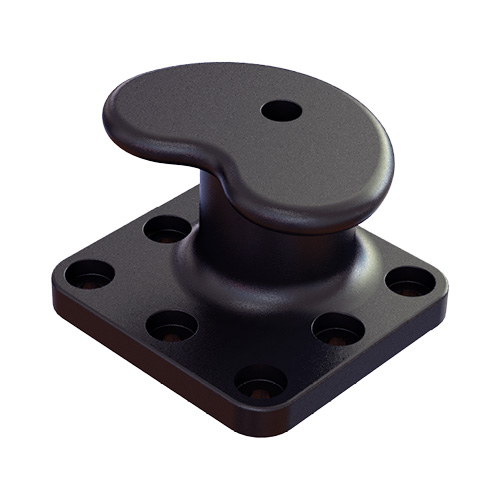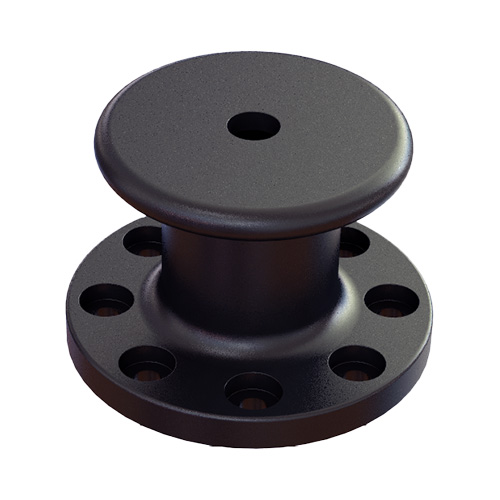Staghorn Bollard, also known as twin horn mooring bollard, staghorn bitt bollard, is a direct upgrade to the traditional double bitt bollard. It is also a commonly used mooring bollard, usually used to ensure the security of ships at sea through mooring ropes. Due to its complex shape, the bollard can accommodate multiple lines in a single bollard and can handle higher linear load angles than single bitt bollard and kidney bollard.
The staghorn bollard is made of durable ductile cast iron or cast steel, using advanced technology and processing methods, and the products meet the standards of China Classification Society. Its mooring capacity can reach up to 250 tons. The surface is coated with primer and 2-component epoxy resin layer and topcoat, which has high anti-corrosion performance. It is equipped with different anchoring systems: anchor rods with end plates and nut fixing for new concrete, anchor rods with epoxy grout and nut fixing for existing concrete, and cast-in anchor systems with break-off bolts.
Staghorn bollards are equipped with different base types, such as hexagonal base, round base, square base and semi-circular base. The horn bollard can be used in harsh environments. It is especially suitable for applications where the tidal range changes greatly and can handle steep mooring line angles. This is an ideal choice for bollard where high tidal variation is present or a multi-purpose jetty.
The staghorn bollards provided by Boomarine are a simple and cost-effective way to meet mooring requirements. And it can safely secure vessels alongside jetties, berths, wharves and dolphins in ports and harbors. In addition to staghorn bollards, we also provide other types of mooring bollards that can maintain high stability and provide safe and reliable mooring operations. If you have any needs, you can contact us at any time.
Features of Staghorn Bollard
- Wide range of anchoring systems and bases for choice.
- Strong & Long-lasting design.
- Qualified epoxy coating with high corrosion resistance.
- Horn head is designed to handle higher linear load angles.
- Due to its complex shape, it can accept multiple mooring ropes without interfering with each other.
Applications of Staghorn Bollard
- Bulk minerals, industrial oil and gas, and liquid pier.
- Local administration and leisure pier.
- Rolling ship, ferry, container, and fishing pier.
- Berth materials unloading and heavy-duty lifting facilities.
Parameters of Staghorn Bollard:
| Type | Capacity (ton) | Bolts |
| BMS-H15 | 15 | 5xM24 |
| BMS-H30 | 30 | 5xM30 |
| BMS-H50 | 50 | 5xM36 |
| BMS-H80 | 80 | 6xM42 |
| BMS-H100 | 100 | 7xM42 |
| BMS-H125 | 125 | 7xM48 |
| BMS-H150 | 150 | 7xM48 |
| BMS-H200 | 200 | 8xM56 |
| BMS-H250 | 250 | 8xM64 |
* Specific size designed according to requirements
Note for Mooring Bollards:
- Generally, the design of the bollard should have a thicker diameter at the top (the head/tip of the structure) to make it more difficult for the mooring rope to accidentally escape.
- It is important to provide a strong anchor point for the mooring rope. Some designs have double bollards for cross-fixing the ropes. This arrangement will -provide a tighter connection. There are single and double designs currently on the market.
- In addition to size and design, bollards are also classified according to their grade and rated load. In addition, durability is a factor when choosing a suitable bollard design, because maintenance is something the end user should consider.
Mooring Bollards Capacity Selection
| Mooring points loads for general cargo vessels and bulk carries | |
| Ship displacement (ton) | Mooring point load (ton) |
| 20,000 up to and including 50,000 | 80 |
| Above 50,000 up to and including 100,000 | 100 |
| Above 100,000 up to and including 200,000 | 150 |
| Above 200,000 | 200 |
Photos of Staghorn Bollards
